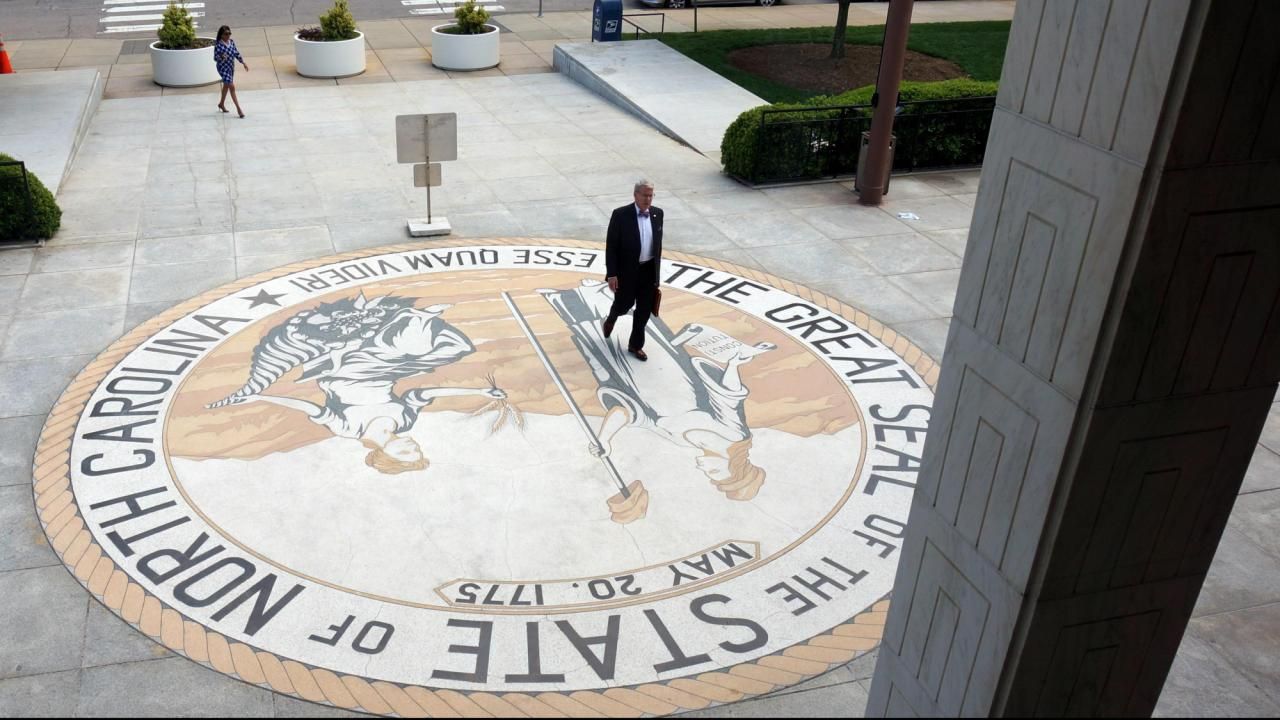Discrepancies emerge after chaotic state budget process; NC DMV commissioner apologizes for miscommunication

It will take a couple tweaks to state law to iron out discrepancies in North Carolina’s driver’s license rules, inconsistencies resulting from miscommunication between Democratic Gov. Roy Cooper’s administration and the Republican-controlled legislature.
Customers may not notice the issues, though a plan to double renewal periods from eight years to 16 could be scrapped, and driver’s license pictures could change from color images to grayscale photos.
Those laser-engraved images are part of a trend in identification, including in U.S. passports. They’re said to be more secure.
North Carolina Division of Motor Vehicles Commissioner Wayne Goodwin, who was called Wednesday before a state House oversight committee, apologized for miscommunication on the issues, though there was some back-and-forth over just what went wrong.
There are two issues:
- A new state contractor plans to print driver licenses with the monochromatic photos, but state law says those photos must be in color.
- The state budget that lawmakers passed last month doubles license renewal periods for most drivers, but the new 16-year renewal period conflicts with federal identification rules.
Goodwin’s DMV asked the legislature this spring to double the renewal period. But when the change passed as part of the new state budget, Goodwin’s office said the change ran afoul of laws governing the federal Real ID. The Real ID is a program was created in 2005 as a way to more securely verify identities. Implementation has been delayed until 2025.
The Republican co-chairs of the House Oversight and Reform Committee wanted to know why the DMV changed its mind without telling lawmakers.
Goodwin noted that the DMV’s initial request, in March, to make the change was dropped from a DMV agency bill by April, so some at the General Assembly got word from the division that the change wouldn’t fly. The commissioner apologized for “miscommunication and confusion” that apparently kept legislative budget writers from deleting the language from the state budget bill, too.
As for the issue with grayscale photos, Goodwin said his division sent a request to change the state law requiring color photos up the chain of command at the Department of Transportation, which houses the DMV. Goodwin said that request wasn’t forwarded to lawmakers, who need to approve the change.
Both issues can be fixed in a subsequent bill over the next several months. That’s common enough that the nearly annual bill making these sorts of changes has a name: technical corrections. The state’s new license printing vendor, CBN Secure Technologies, can also print the images in color, Goodwin said, though it would prefer to use the grayscale.
The miscues in the law are indicative of bureaucracy, and of the often secret and chaotic legislative process that culminated in a 625-page state budget voted through the General Assembly last month, less than 48 hours after the final bill’s public release. That document, which included numerous policy changes beyond the $30 billion a year in state spending that it lays out, was negotiated behind closed doors by top Republican leaders who apparently didn’t get word of all the needed changes.
Once leaders finished those negotiations, no amendments were allowed before the budget vote. This process gives Republican leadership power over other members — Republicans and Democrats — who have to vote yes or no on the document in full, despite having limited time to read it.
Wednesday’s oversight hearing was largely cordial, and committee co-Chairman Jake Johnson said he hopes to hold more hearings aimed at finding ways to improve the state’s procurement process.
The new state budget also calls for a $125,000 study, due by May 1, on whether privatizing the Division of Motor Vehicles would improve customer service.










